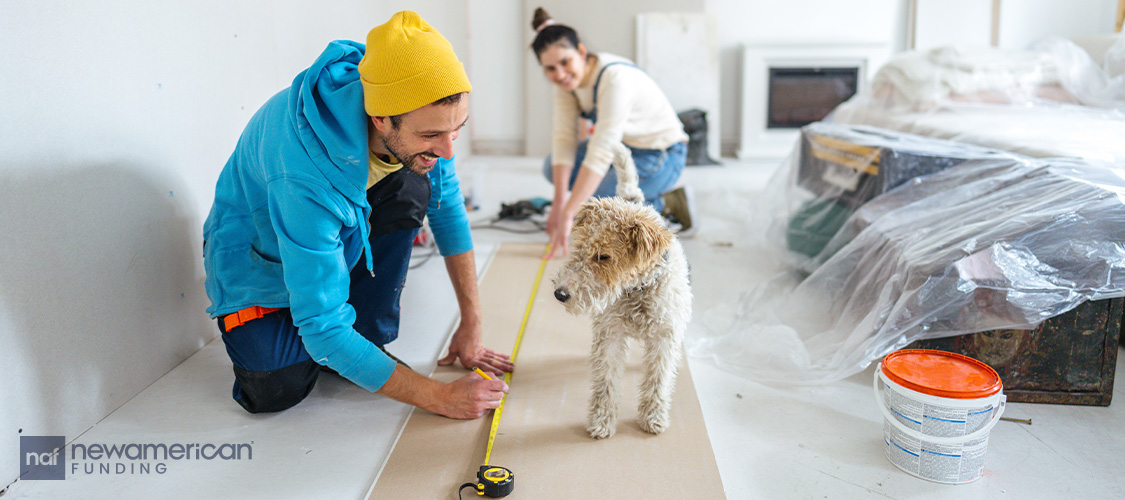Homebuyers
Fixer-Uppers: Affordable Dream Homes or Expensive Money Pits?
November 20, 2024
If you’re looking for a modest, reasonably priced home in today’s housing market, you will probably come across listings with descriptions such as “needs some tender loving care,” “here’s a chance to add your personal touch,” or even the hyperbolic “this is a great investment opportunity.”
These fixer-uppers carry temptingly lower price tags that are especially alluring when you’re on a tight budget. However, many buyers underestimate the extent—and cost—of the work these properties require.
Whether such properties are dollars-and-cents dreams or impending financial disasters in the making depends upon many factors, including how handy you are with a hammer and nails, what kind of work the homes need, and how much extra money you have in the bank.
It’s not uncommon for the cost of renovations to equal or even exceed the purchase price of the home, said Bill Brackmann of Brackmann Construction in Belton, Mo.
“Many people are shocked by the dollar numbers,” said Brackmann.
How much work does a fixer-upper need?

It’s impossible to know just how much renovations will cost on a fixer-upper. This will depend on the issues in the home, what the homeowners want to do to the property, where the home is located, how much of the work you do yourself, among other factors.
Although a home inspection is a good start toward figuring out the condition of a property, it only often covers obvious, surface defects.
An engineer’s report and a contractor’s estimate will give a better idea of what you’re in for financially. However, they are not a sure-fire guarantee because nobody knows what will be found once walls are opened.
“What you look for ideally is good bones and cosmetic, not structural, repairs that won’t cost a fortune to bring up to code,” said property manager Bryan Kyle of Las Vegas-based Bryan Kyle Realty.
Problems like a severely cracked foundation may set homeowners back $15,000 to $25,000, according to This Old House. A new roof could cost $8,500 to $14,300, while new plumbing in a 2,000-square-foot house ranges between $10,000 and $12,000, according to This Old House.
The actual cost could be more or less depending on the circumstances.
Homeowners are responsible for paying for the materials and products, the labor, as well as permits. They may also choose to hire an architect, an engineer, and a designer.
Taking out loans to finance improvements for fixer-uppers
 Many buyers purchasing fixer-uppers to live in need to take out home improvement loans to finance the work.
Many buyers purchasing fixer-uppers to live in need to take out home improvement loans to finance the work.
One option is a 203(k) loan from the Federal Housing Administration. Eligible borrowers may be able to finance small and major renovations on single-family houses up to certain dollar amounts.
Such loans cover projects that include the repair or replacement of major systems, including plumbing and heating; kitchen and bathroom remodeling; making the house accessible for people with disabilities; and the repair or replacement of the roof.
Buying a fixer-upper can, however, impact your ability to get a mortgage.
Lenders often require the home to have the basics, including working utilities and stable foundations.
“It varies a bit by lender,” said Ryan Dossey, the co-founder of SoldFast, an Iowa-based investor that takes on 50 to 60 rehabilitations annually. “But in general, they’re okay with cosmetic defects or normal wear and tear.”
Buyers may have to compete with investors for fixer-uppers
While fixer-uppers may not attract as much interest from other families, buyers may have to compete with investors coming in with all-cash offers.
That may be hard for buyers who need to use a mortgage to purchase a home. Some lenders help buyers make all-cash offers to sellers and then get a mortgage on a home. This way they can be competitive even if they don’t have deep cash reserves.
“It’s difficult to get a fixer-upper without financial resources,” said Kyle. “In Las Vegas, for instance, where you are competing with investors, you’d be hard pressed to buy one if you didn’t offer all cash.”
Can you live in the fixer-upper while it’s being renovated?

What most buyers can count on is that the fixer-upper will require more time and money that you expected.
Buyers should factor into their budgets whether they will be able to live in the property while it’s being renovated. If not, they may have to stay with family or friends or set aside money each month for a rental.
Generally, the work takes between six months and a year-and-a-half to complete depending on the size of the home, said Brackmann. If you’re taking the home down to the studs or there are issues with mold or asbestos, you’ll also be paying for additional living quarters.
“Doing a ‘live-in’ remodel isn’t pleasant if you do more than just paint and flooring,” said Dossey. “Everything will get covered in construction dust.”
However, it could be a good way to save money and allow buyers to live in neighborhoods they couldn’t otherwise afford.
“Buying fixer-uppers is a great way to build wealth and liquidity,” said Dossey. “Getting a great deal due to condition can put [buyers] in a better place for schools, appreciation, and ultimately resale.”






 Smart Moves Start Here.
Smart Moves Start Here.